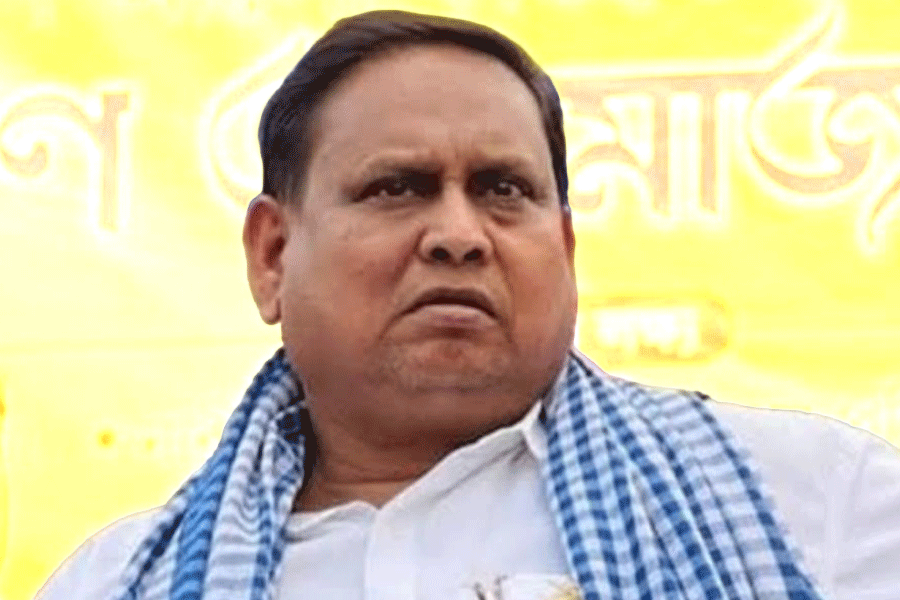 |
At first glance, these may be mistaken for photographs of the Calcutta Book Fair in its early days when it used to be held on the Maidan opposite the Park Street crossing adjacent to Generals Tank.
But if one looks carefully one would notice that the clouds of dust and the melee that used to be a permanent fixture of the book fair are missing. These rows of marquees, the exhibition building, pennants, pavilions and the avenues running by their side, and the fountains are far too grand to be part of the book fair, which was a humdrum affair, notwithstanding the crowds it used to pull.
Moreover, the location is all wrong. This is opposite the Indian Museum building, and the Shahid Minar is clearly visible in the horizon. The exhibition building is close to a sheet of water, and even closer to the tank are the machinery sheds with the wind-powered machines encircling the tank.
These are the rarest of rare photographs of an exhibition held in Calcutta about a century before the book fair began, and these were discovered by pure chance recently at the Government College of Art & Craft.
Prithwiraj Biswas, an assistant professor in history at the Ramakrishna Mission Vidyamandira in Belur and a research fellow at the Centre for Studies in Social Sciences, was searching high and low for some material in the library of the art college in February when he stumbled upon the dusty album containing the amazing photographs. The album, which bears the rubber stamp of the Calcutta Art School — as the college was known then — was forgotten thereafter.
Almost 10 months later, the librarian, Shyam Sundar Kundu, and his staff, through the good offices of Chandan Das, the officer in charge of the college, have dug out the album once again for its photographs to be copied by the Indian Museum. Till now it was thought that only another album containing photographs of this exhibition existed, and it is in the custody of the Canadian Centre for Architecture at Montréal, Québec.
This moth-eaten, priceless album, whose binding has come apart, should immediately be fumigated and conserved. These 200 photographs of the Calcutta International Exhibition 1883-1884, which have turned sepia with age, were taken at the direction of the Government of Bengal by A.W. Turner under the superintendence of Major J. Waterhouse, BSc, assistant surveyor-general, and printed in the photographic office of the Survey of India Department, Calcutta.
Only another person is recorded to have officially documented this exhibition. He was an Indian named Shivshankar Narayan and his album is with the Canadian institution.
The Calcutta International Exhibition was held between December 1883 and March 10 the following year, on the premises of the museum and extended to the Maidan. An essay by Peter H. Hoffenberg titled Photography and Architecture at the Calcutta International Exhibition in the book Traces of India carries an account of the exhibition. It was India’s very own Great Exhibition, which was originally held at London’s Crystal Palace in 1851, and was meant to showcase, promote trade and give a boost to local producers, and highlight natural and manufactured assets.
The success of Australian international exhibitions held in New South Wales (1879) and Victoria (1880-81) also served as an impetus. The scale and scope of the exhibition, where one could also buy some of the items on display, can be guessed from the fact that participants from Britain, Australia, Japan, North America and Europe eagerly joined the jamboree.
Exhibitions were commonplace in 19th century India but the volume of novelties, architectural remnants — both actual ones and mammoth plaster casts of original monuments — and exotic and ornamental stuff displayed in this particular one was so great that it attracted record crowds.
The India Court was arranged in accordance with the various regions represented. Shyamal Kanti Chakaravarty, former director, Indian Museum, in his book Jadugharer ghare ghare, writes how two disciples of Ramakrishna Paramhansa had commented on the sumptuousness of the items on display at the exhibition. “Rajas have sent priceless objects to be displayed at the exhibition. There are precious objects like beds of gold.”
The talent of Indians was harnessed for the success of the exhibition. When Trailokyanath Mukharji, the self-taught Bengali satirist, who was employed as an assistant curator with the Indian Museum, was assigned the task of collecting “specimens of raw produce” from all over the country, his enterprise was deemed such a huge success that his general report was subsequently considered a point of reference by all concerned.
He had written the catalogue of this exhibition titled, Art Manufacturers of India. Mukharji was an authority on Indian decorative arts, and his reports on Indian art became standard reference. Students of local art schools, including the Calcutta Art School, were employed to lend their hands in the display and promotion of the exhibition. Students of this school of art fared very creditably in the exhibition and received one gold, two silver, three bronze medals together with three first and three second class certificates. A Bengal Art Gallery had been constructed in the museum for the exhibition. This temporary structure was demolished when the front of the west side of the museum’s quadrangle was remodelled during Lord Curzon’s time.
The album reveals the opulence of the objects amassed in the various courts like Burmese, Central Indian, Bombay, Punjab, Madras, Mysore, Hyderabad, North-West Provinces, Assam, Bengal, Calcutta, Japanese, Cochin China (a French colony from 1862 to 1954 encompassing the southern third of Vietnam), miscellaneous interiors and views of the exhibition grounds. The Australian court displayed photographs of Aboriginal Australians.
The wood carvings, brass, bronze, copper and silverware, jewellery, inlay work, ivory, papier mache, mother of pearl, lacquer, pottery, embroidery, filagree (sic), enamel, and arms and weapons are so intricately worked that it is difficult to believe that human hands produced them. These are such high fidelity photographs they resemble repoussé. Close to the “Jeypore” Court is the Osler’s glass fountain. Follett Osler had created the world’s first glass fountain, crafted out of four tons of pure crystal glass. It was displayed in the central court of the Crystal Palace of the London Great Exhibition of 1851. It was destroyed in a fire, along with the Crystal Palace, in 1936. Perhaps it was the glass fountain that the Mitras of Shyampukur prided themselves on. Now it is lost without trace. The other fountains were probably installed in the Eden Gardens.










